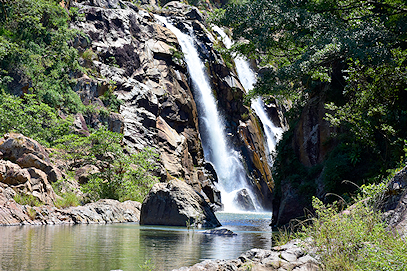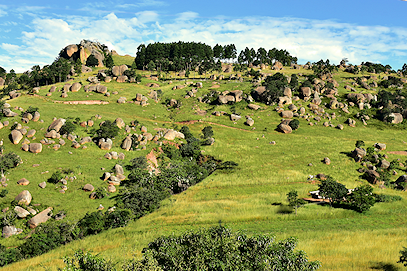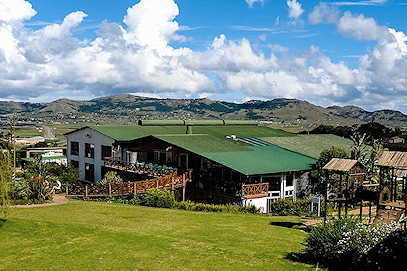EswatiniTiny Kingdom
Help Me Plan- Home
- >
- African Travel
- >
- Eswatini
Eswatini Destination Guide
Eswatini (formerly Swaziland) is a tiny, land-linked kingdom between South Africa and Mozambique. It’s a rewarding stop when traveling between the Kruger area and KwaZulu-Natal, with living culture in Mantenga and Lobamba, scenic Ezulwini Valley views, and easy access to wildlife areas like Hlane, Mkhaya and Mlilwane.
Getting to Eswatini
By Air: Guests heading to Eswatini are typically welcomed at O. R. Tambo International Airport and travel onward by road. Scheduled flights serve King Mswati III International Airport near Manzini; private charters also operate.
By Road: Eswatini is mountainous, and guests are transported in private, air-conditioned 4x4 vehicles by experienced guides. Driving from South Africa is popular and allows visitors to explore the contrasts between countries.
Weather & Best Time to Visit
Like much of the Southern Hemisphere, summers (October–March) bring rain, heat and humidity, turning hillsides lush and attracting Palearctic migrants. The dry winter months (April–September) offer thinner vegetation and more reliable wildlife viewing. Cultural activities and festivals occur year-round; the marula season is typically in February–March.

Mbabane is the administrative capital, while Lobamba serves as the royal and legislative capital. In 2018 the king announced the country’s official name as “Eswatini,” though “Swaziland” still appears in some legacy contexts and URLs.
Reasons to visit Eswatini
Culture Tours
Various villages offer immersive culture and cuisine. The Mantenga Cultural Village in the Ezulwini Valley is a favorite, with traditional dance and song and insights into Swazi lifeways from over a century ago.
Golf
A golfing experience set among mountains: the championship course at the Royal Swazi Spa (Ezulwini) is a scenic 18-hole layout planned to work with the terrain.
Swazi Candles
Swazi Candles Centre showcases intricate, hand-made candles from 100% paraffin wax with colorful, molded exteriors. Visitors can watch artisans at work—and try making one.
Experiences to be Savored
From living culture to green valleys and lowveld reserves, Eswatini offers memorable experiences within short driving distances.

Mantenga Magic
If you have a day to spare, visit Mantenga Nature Reserve for the country’s well-known waterfall and a cultural village—both called “Mantenga.”
Ezulwini Valley
Aptly nicknamed the “Valley of Heavens,” Ezulwini serves up dramatic cloudscapes, sunsets and sunrises over a lush valley—great for landscape photography.
Handle with Care
Ngwenya Glass has produced décor from recycled glass since 1987; part of the proceeds support conservation. Watching the glassblowers at work is a highlight.History
Artifacts indicate human presence since the Early Stone Age. San hunter-gatherers left rock art—some panels are tens of thousands of years old. Iron Age farmers arrived by the 4th century. By the early 19th century, the Swazi polity consolidated under Sobhuza I, followed by expansion under Mswati II. After a period as a British protectorate (1906–1968), the kingdom gained independence; in 2018 it adopted the official name Eswatini.
Wildlife
Hlane Royal National Park is known for the Big Five, including lion, elephant, rhino, buffalo and (elusive) leopard. Mkhaya Game Reserve focuses on endangered species: excellent black & white rhino sightings, buffalo, sable, roan and tsessebe; elephants were removed in 2015 to protect habitat. Mlilwane Wildlife Sanctuary allows walking and cycling because it lacks large dangerous game.
Vegetation & Terrain
Eswatini’s terrain is mostly mountains and hills with sloping plains. A fault line running from the Drakensberg northwards creates varied environments—from Highveld grassland and evergreen forest patches to Lowveld savanna and bushveld. The Lebombo Mountains on the Mozambican border are cut by the Ngwavuma, Usutu and Mbuluzi rivers, shaping canyons and diverse habitats.
Activities
Eswatini is ideal for intimate, low-volume safari and soft adventure. Popular activities include guided game drives and walking safaris (Mkhaya, Hlane), self-guided hiking and cycling (Mlilwane), birding (500+ species recorded), horse riding, caving, rock climbing and abseiling, white-water rafting, canopy tours and year-round cultural festivals.









